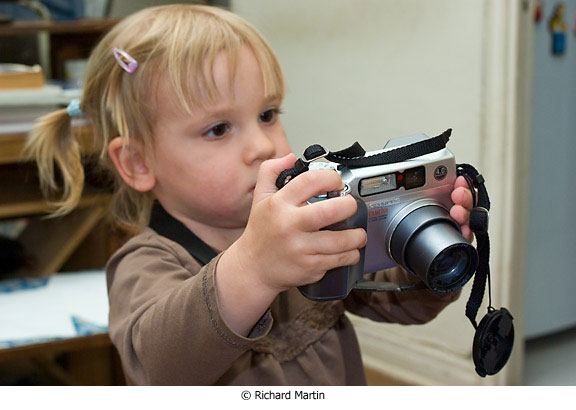
"I can't describe the feeling I get from photographing hummingbirds. It seems to feed my soul," said Richard Jessee of Pound, Virginia. His eloquent thoughts echoed the beauty of this photograph so NYIP chose his picture of a hummingbird with an iris to be the Photo of the Month.
I hope that you appreciate the difficulty of making such an excellent photograph. First of all, the hummingbird is one of the more elusive creatures in nature to photograph with any degree of clarity and sharpness. The very high speed at which the bird flies defies the efforts of most veteran photographers of birds. One sees plenty of hummingbird photographs, certainly, but not many as richly detailed as this one, and Richard Jessee is to be congratulated for a job well done.
Crawford Greenwalt, the late Chairman of the Board of E.I.DuPont de Nemours, was an outstanding amateur ornithologist and a fine photographer, particularly of hummingbirds. His photographs were technically expert and noted for the fine sharpness of the details. But Greenwalt's task was made easier because of the electronic flash that was specially built for the work at hand. Equipment that you and I could probably not obtain unless at great expense.
Therefore, it is remarkable that Richard Jessee has done as well as he has, using equipment readily available to almost every amateur photographer.
You probably are very familiar with the three well known NYIP Guidelines: strong subject matter, focusing of attention on the subject, and then simplifying the picture by eliminating all that is unnecessary and retaining all that is needed. Let's see how Jessee put these to good use.
First of all, he has chosen two beautiful natural objects for his subject matter — the hummingbird and the iris. In photography, subject matter is not always a prime consideration although it frequently is. But I think that the photographer's remarks about feeding his soul sum up his approach. He implies that great beauty strongly moves him and that photographing beautiful things makes his life more enjoyable than photographing a cinder block. Each iris and each hummingbird is different from others, but if you've seen one cinder block you've seen them all!

So, if you start with superior subject matter your job is easier than if you had started with more common place prosaic items, much easier.
In order to focus attention on his subjects, Jessee threw the background out of focus, thus emphasizing both flower and bird. And he used the familiar Rule of Thirds and placed both bird and flower off center. Generally, that off center placement results in a more dynamic and eye catching composition.
Note the precise placement of the bird's beak on the flower. They say that baseball is a game of inches, but I say that photography is a game of fractions of an inch. Fractions of an inch that can make the difference between a fairly good photograph and a truly fine one!
Jessee has placed his camera high enough so that the viewer can see a bit down into the flower. It wouldn't have been a bad photograph, though, if one viewed the flower at eye level. Still, the chosen camera position enables us to see something of the inner depths of the blossom and thus stimulates our imagination even more. There is a kind of tantalizing aspect here that makes us want to learn more about the flower (and, of course, the bird as well).
The use of selective focus clearly isolates bird and flower from what might have been an otherwise distracting background; this is a good way to focus attention upon the subject (the second NYIP Guideline).
The position of the green leaf below the hummingbird and to the right of the main blossom seems like a knife edge thrusting upward to ward off the aggressive action of the bird. In a sense, one can readily imagine that the bird is violating the privacy of the flower and that the green leaf is coming to the flower's rescue. Fanciful? Perhaps.
So there you have it, NYI’s Photo of the Month. I hope you like it as much as I do.
And I hope that you have been motivated, too, and will try your own hand at similar photographs.






